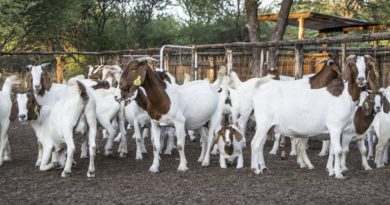Dehorning
The Rubber band method.
It was by chance that Mathews Motladiile discovered a simple but ingenious, hassle free method to dehorn his cattle. Below he explains to Farmers Review how it’s done.
It all started when Mathews, busy at work, tied a rubber band around the tip of his index finger and somehow forgot it there for a very short while. The tip of his finger began to turn black. “That part lost its colour and it sort of became numb” Explains Sean. And as they say the rest is history.
The method is simple. You simply tie the rubber band just where the horn begins to grow. This is just before the Horn forming tissue (see diagram). The rubber band must be very tie and a proper knot used to avoid the band slipping. The rubber band basically cuts of blood supply to the horn and it eventually falls off. This fundamentally works the same way as castrating rubber when castrating bulls. This whole exercise takes about 10 days.
Mathews advises farmers to dehorn their cattle during winter when fly activity is usually low as it would allow the wound to dry quickly with the minimum risk of infection. “Farmers must Never dehorn cattle in wet weather, because the healing rate is decreased and the risk of infection increased.” He emphasizes
Treatment after dehorning
Sometimes the wound takes a bit longer to heal after the horn falls off. If you don’t have money to buy appropriate medicine, you can use tar to treat the wounds especially to prevent flies causing any infection.
For those with money, you can buy any treatment that contains fly repellent. Be sure to inspect cattle regularly for the first 10 days after dehorning and any infected wounds must be treated.



